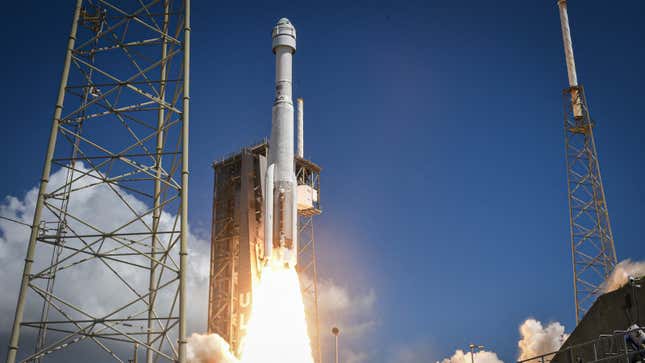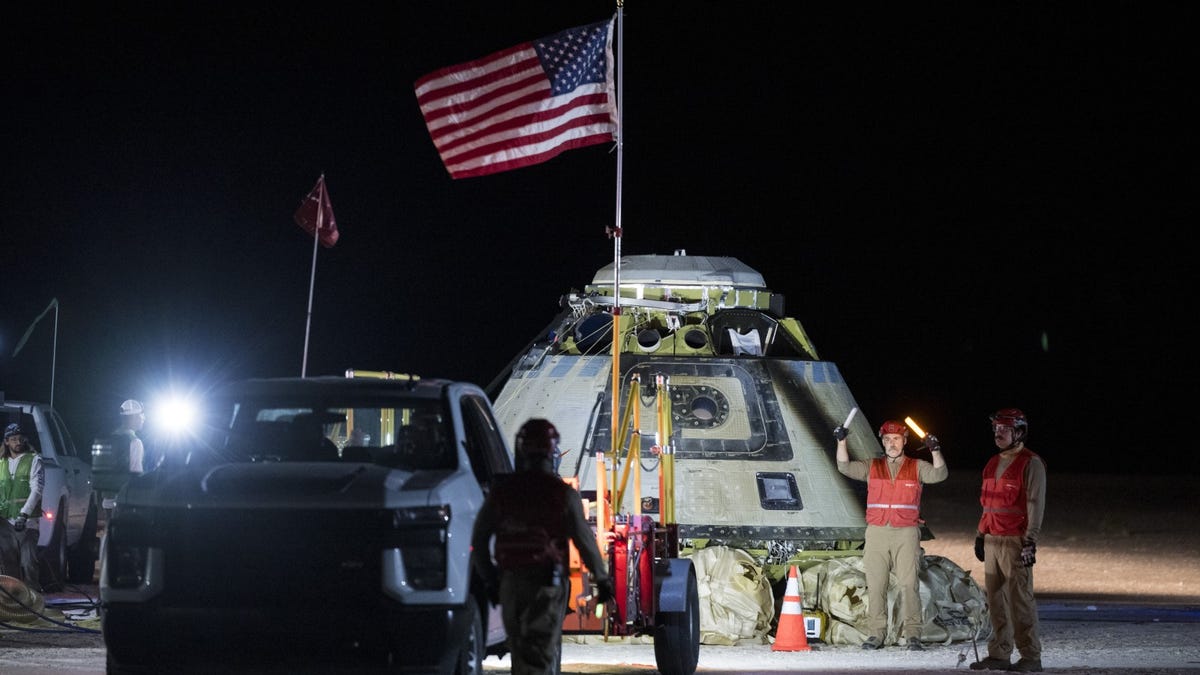Boeing’s first foray into manned space flight has been an unmitigated cock up. Starliner launched to the International Space Station with two astronauts onboard in June and landed back on Earth two months later without them after issues were uncovered with the craft. Now, more problems have surfaced during Starliner’s return, reaffirming NASA’s decision not to trust it with the lives of Butch Wilmore and Suni Williams.
Starliner landed back on Earth this weekend, almost three months later than it was initially scheduled to touch back on terra firma. The delay in its return follows issues that arose with the craft’s thrusters during it’s docking with the ISS, as well as other problems that were uncovered while the ship was in space.
The problems with Starliner left NASA with no choice but to leave astronauts Wilmore and Williams up on the ISS as they didn’t believe it was safe bringing them home on Starliner. Instead, they’ll hitch a ride home on a SpaceX ship next year, leaving them in orbit for almost eight months, instead of the eight days originally planned.

That decision is looking like a safe bet now, as Futurism reports that further issues arose with Starliner on its return to Earth this weekend:
Signals on the capsule’s return were mixed. On the one hand, according to NASA’s commercial crew program manager Steve Stich, it pulled off a “bullseye landing.” On the other, the agency admitted that a new thruster had failed during its descent. The capsule also experienced a temporary blackout of Starliner’s guidance system during reentry.
It’s an awkward situation for the space agency: would Starliner have been able to ferry NASA’s missing crew members in the end?
“I think we made the right decision not to have Butch and Suni on board,” Stich told reporters on Saturday. “All of us feel happy about the successful landing. But then there’s a piece of us, all of us, that we wish it would have been the way we had planned it.”
Questions arose about Starliner’s condition after five out of 28 thrusters failed when it docked with the ISS back in June. In the months that followed, engineers discovered that the failure was due to overheating in certain parts, which isn’t a good look on a rocket engine that *checks notes* burns stuff as part of its job.

Because of this and the extreme conditions the craft would experience during re-entry, NASA decided not to bring it back to Earth with Wilmore and Williams onboard, despite Boeing’s claims that it would be safe. This differing opinion is only highlighting the chasm that exists between Boeing and NASA right now, reports Ars Technica:
Three NASA managers, including Stich, took questions from reporters in a press conference early Saturday following Starliner’s landing. Two Boeing officials were also supposed to be on the panel, but they canceled at the last minute. Boeing didn’t explain their absence, and the company has not made any officials available to answer questions since NASA chose to end the Starliner test flight without the crew aboard.
“We view the data and the uncertainty that’s there differently than Boeing does,” said Jim Free, NASA’s associate administrator, in an August 24 press conference announcing the agency’s decision on how to end the Starliner test flight. It’s unusual for NASA officials to publicly discuss how their opinions differ from those of their contractors.
Joel Montalbano, NASA’s deputy associate administrator for space operations, said Saturday that Boeing deferred to the agency to discuss the Starliner mission in the post-landing press conference.
NASA was scheduled to operate further Starliner launches in collaboration with Boeing, with the next currently tentatively scheduled for August 2025. However, there’s no certainty over that now as questions swirl about Boeing’s ambitions for space flight going forwards.

